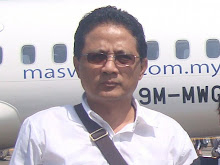Anindya Novyan Bakrie, The Jakarta Post, Jakarta | Sat, 11/19/2011 11:01 AM A | A | A | - Klipping The Jakarta Post
As Indonesia is hosting the sixth East Asia Summit (EAS) in Bali, intense focus will fall on its two newest members, Russia and the United States. But while Moscow’s energy security will be paramount, Washington will offer a strategic security in part opposing another member — a fast-growing China.
The other 16 EAS participants will acutely observe the policies Washington advocates at the Summit. And China, whose own economic and now strategic rise is setting the broader EAS agenda, will be paying particular attention. It is well warranted, for while the US does not seek to fully block Beijing’s influence in East Asia, it will certainly push to counterbalance it.
Indonesia, the largest country in the key region of Southeast Asia, has a keen interest in the continually evolving relations between the US and China. To this end, the EAS will provide a useful forum for the articulation of American and Chinese positions.
Given its strategic location amid overlapping Sino-US spheres of influence in Pacific Asia, a clear understanding of this dynamic is essential to the Association of Southeast Asian Nations (ASEAN), which Indonesia currently chairs.
One area of critical importance for ASEAN nations is security in the South China Sea. Ocean areas and the Paracels and the Spratlys, two island chains claimed in whole or in part by China and Taiwan as well as four ASEAN members — Brunei, Malaysia, the Philippines and Vietnam — are at the heart of the dispute.
Increasing Chinese assertiveness over its claims has led ASEAN to look to the US for countervailing support. Washington has obliged. In doing so, it has emphasized the importance of freedom of navigation in the South China Sea. More broadly, it has asserted its own national interest in seeing the maritime claims resolved without any use or threat of force.
The US stance is widely seen as a response to Beijing’s desire to treat the South China Sea as a core interest. This would place it on par with Taiwan, Tibet and Xinjiang, other places over which China has declared its national sovereignty — and justifications for military intervention when needed.
It will be fascinating to see whether and how the South China Sea dispute — and the contrasting positions of China and the US — features in the EAS discussion. However, even as ASEAN countries turn to the US for strategic reassurance, they do so in full knowledge that their economic future depends on closer cooperation with a booming China.
An important part of this relationship lies in the area of ASEAN connectivity. The recent establishment of the ASEAN Infrastructure Fund, worth nearly US$500 million, is a small but significant step toward integrating the region through roads, railways and other infrastructural projects.
These projects could form the core of an ambitious enterprise to connect ASEAN with Northeast Asia, particularly China, thereby building a more viable East Asian Community. The construction of a Singapore-Kunming rail link, for example, could be extended to Surabaya, Indonesia’s second-largest city, which would help connect an important part of ASEAN into China’s expanding economic interests.
These factors make the EAS a compelling one. Moreover, it is natural for ASEAN to seek closer relations with both the US and China. But the group’s endeavors will be frustrated should the world’s two most powerful nations drift apart.
For instance, US House legislation forcing China to revalue its currency, the renminbi — so the US can better compete with Chinese exports — has prompted Beijing to threaten a trade war.
Such a showdown would be disastrous as Asian growth is one of the few reasons for confidence in a world beset by the US and Europe’s economic slumps.
And although ASEAN can do little about the Sino-American currency dispute, it would be devastated by a trade war. Moreover, in an EAS in which two important countries are warring economically, the resolution of other issues important to the region, such as piracy in the Indian Ocean, will likely go unresolved.
Of course, the EAS is not the only pan-Asian mechanism for regional issues. The Asia-Pacific Economic Cooperation (APEC) forum facilitates economic cooperation while expanding trade and investment. APEC’s footprint now covers 55 percent of global GDP in a market of 2.7 billion consumers accounting for 43 percent of world trade.
But APEC’s agenda is largely economic and, no matter how fast globalization spreads, economic prosperity in itself will never fully substitute for security. Hard security issues, such as the South China Sea dispute, complicate and could disrupt stability across East Asia.
The EAS meeting in Indonesia will provide a true test as to whether the region can maintain solid footing at a time when the world’s economic center of gravity is moving steadily toward Asia. One way or the other, East Asia needs both American military muscle and China’s economic momentum to stay on course.
The writer is deputy chairman of the Indonesian Chamber of Commerce and Industry, the CEO of Bakrie Telecom and chairman of VIVA Media Group. He is also the President-appointed representative for the APEC Business Advisory Council and is a board member of the International Council of Harvard University’s Belfer Center for Science and International Affairs
Subscribe to:
Post Comments (Atom)

No comments:
Post a Comment